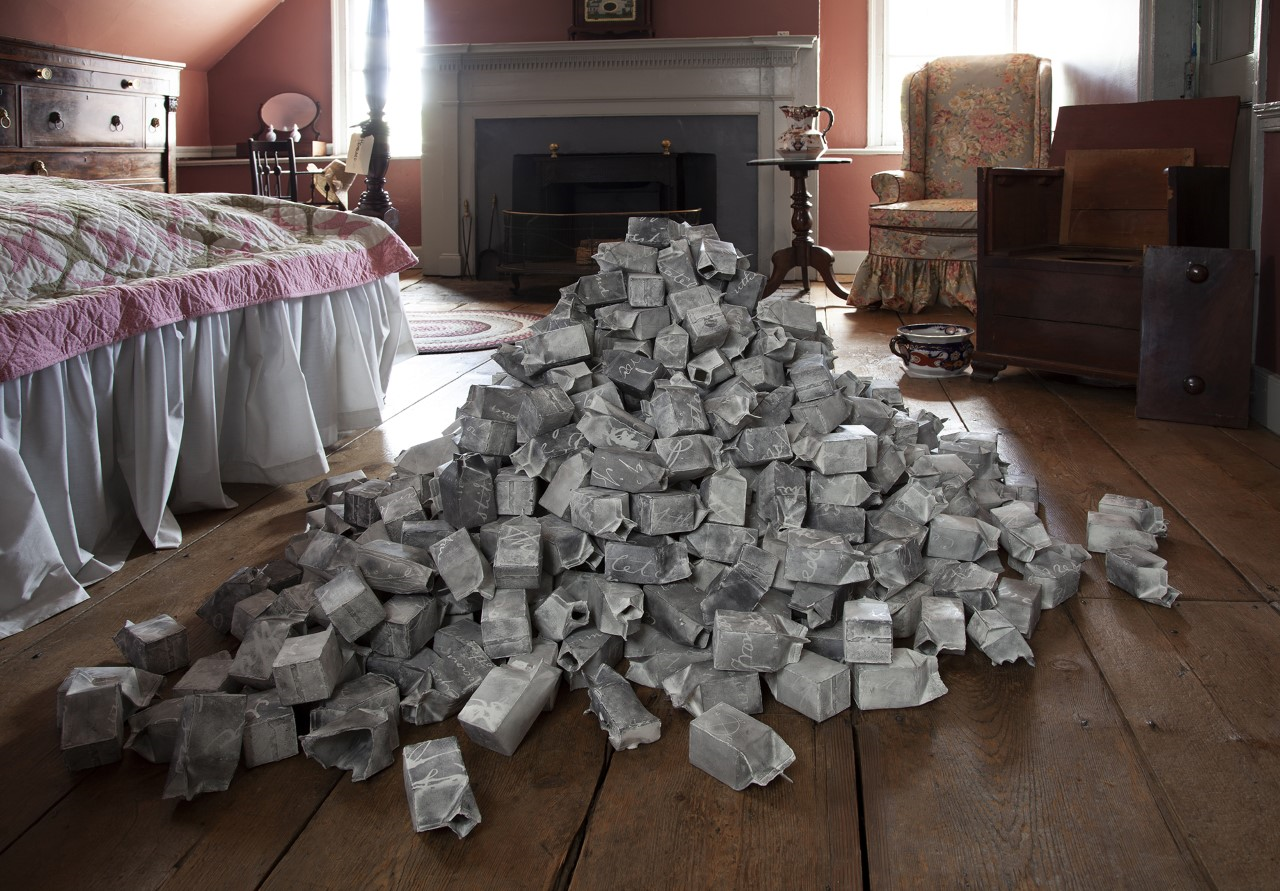DyckmanDISCOVERED: Fostering Inclusive Historical Narratives
By Meredith Sorin Horsford
In 2015, the Dyckman Farmhouse Museum (DFM), which had been a very traditional historic site with little relationship to its community, came under new leadership. Soon after, DFM became the recipient of a grant program called shatterCABINET with the Chipstone Foundation, which provides funding to rethink how historic house museums can be relevant to their present-day community. Through this grant, the Dyckman Farmhouse removed all of the room barriers that had previously prevented visitors from entering the period rooms, installed bilingual labels and signage, and began offering bilingual programs, promotional materials, and visitor services. This not only impacted the audience that we serve, as neighborhood residents began visiting the museum for the first time, but it also helped the organization reshape public programs to feature interpretation that connects the history of the site and its rural roots to the present-day urban community.
Since implementing these changes, it has been a goal of the Dyckman Farmhouse Museum to add to the interpretation of this historic site in a meaningful way—by representing the untold history of the enslaved and free people that lived and worked at this house and throughout what we now call Inwood. Community members and tourists alike often ask about these enslaved peoples, how old they were, what their lives and families were like, and what tasks they were assigned on the farm.
We have been working for some time with elected officials and the City of New York to commemorate the Inwood Slave Burial Ground, which lies underneath a school and parking lot at 212th and 10th Avenue. As we continue to work with officials to meet this goal, we are simultaneously working to research the histories of those who may be buried there. Through a generous grant from the New York Community Trust, DFM has been able to hire a part-time researcher to dedicate time to the topic of slavery in Upper Manhattan and, more specifically, on the Dyckman property.
It is this project, DyckmanDISCOVERED, which inspired our artist in residence, Peter Hoffmeister, to create site-specific installations for our period rooms. During his year-long residency, Hoffmeister created works in response to the house and its history, fostering a dialogue between his studio practice and research in our archives, which culminated in the exhibition, Ground Revision. Hoffmeister’s work is a commentary on whose stories are saved, talked about, and viewed as important by examining the stories that have been ignored. This exhibit is a first step for the farmhouse in expanding the narrative of the museum and the community to include the important figures whom we know little about.
In March 31, 1777, Hoffmeister replaced the drawers of several furniture pieces in the Dyckman Farmhouse with ones clad in a marbled pattern like those on the covers of composition books used by schoolchildren. Open drawers reveal illuminated photos of the cracked pavement from the current site of the Inwood Slave Burial Ground. The title of this work, March 31, 1777, refers to the lone inscription on one of the 36 rough-hewn grave markers that were found on the original site of the Inwood Slave Burial Ground.
The second installation, Nutrition Facts, resembles school lunch milk cartons. This relates to the school that has been constructed over the slave burial ground.
The final two works installed at the farmhouse relate more specifically to the incomplete narrative of American history. Storyteller addresses the omission of enslaved history by presenting traditional historical markers that bare no information.
The fourth and final installation is titled Francis Cudjoe. Composed of ceramic lantern sculptures, this work honors Francis Cudjoe, a man who was enslaved on the Dyckman farm and later emancipated. His name was uncovered through targeted research related to the DyckmanDISCOVERED initiative.
Previously, we had been able to piece together the legacy of white landowners, but not enslaved or free people that kept the farm operating, as the Dyckmans and other landowners kept few records on them despite the important role they played. Through this ongoing research project, we have found more information about the lives of the people that were enslaved in what we now call Upper Manhattan. With the installation of Hoffmeister’s thought- provoking work, we can support a conversation about whose history we tell, and why certain individuals have historically been left out of the interpretation of the site.
DFM has already begun its fundraising campaign to create a fully interactive and engaging exhibition in the winter kitchen, as well as an interpretive plan for the entire house and grounds, which will feature the stories of the enslaved people who lived and worked here. It is very important to us, especially in our role as a resource for our community, to provide a more complete narrative of the growth and evolution of Inwood.
Meredith Sorin Horsford has served as Executive Director of the Dyckman Farmhouse Museum since 2015. She has worked as a museum and nonprofit professional for 16 years, serving in many capacities at the Historic House Trust of New York City.



